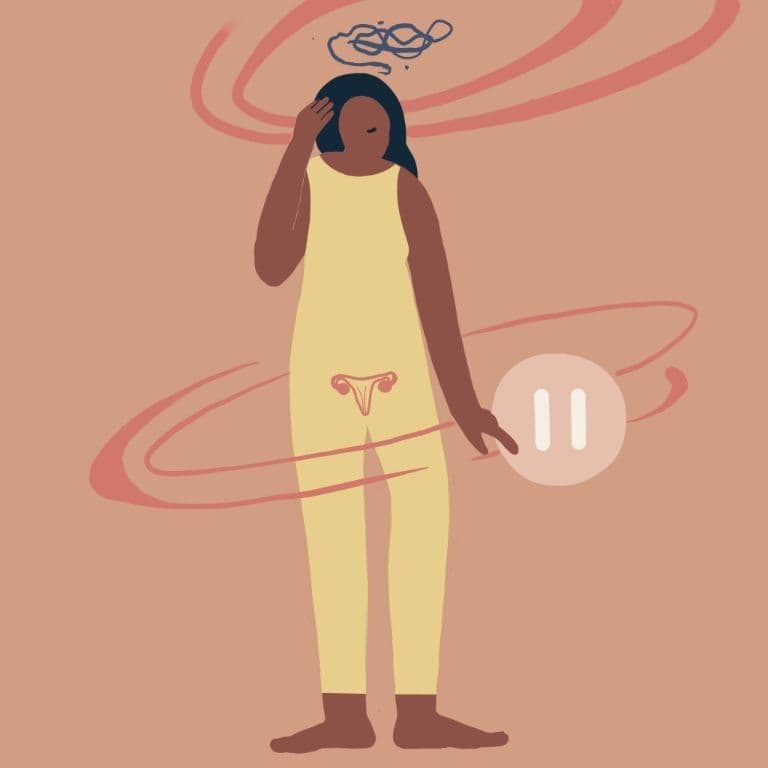This blog is compiled by Athira Krishnan, a content writer for Proactive For Her.
What is a hysterectomy?
Hysterectomy is the surgical removal of the uterus. It may also involve the removal of the cervix, ovaries, fallopian tubes and other surrounding structures.
What are the different types of hysterectomies?
- Subtotal hysterectomy - In this procedure, the cervix of the woman is left behind. This may be due to the cervix being firmly attached to the urinary bladder or the rectum. Only the uterus is removed in this case
- Total hysterectomy - In this procedure, the entire uterus along with the cervix is removed.
- Radical hysterectomy - This method is usually done in cancer patients. In this particular procedure, the uterus, cervix, ovaries, a small portion of the vagina and some tissues around the uterus are removed.
When is a hysterectomy done?
For non-cancerous conditions, a hysterectomy is opted for as a last resort, only after all other medical treatments fail. Initially, depending on the uterine disorder you may have, your doctor may prescribe medication and in some cases, if required, some minor procedures like uterine balloon therapy, ablation therapy or removal of fibroids are done. In most cases, the condition in question is successfully treated.
What conditions may require a hysterectomy?
There are several conditions in which the uterus is affected. Hysterectomies may be done in some of these conditions when previous medical treatments prove ineffective.
- Abnormal uterine bleeding - This is the most common condition that affects the uterus and develops during menopause or the perimenopausal period, due to hormonal imbalance. In this, you may have irregular or heavy periods. Irregular periods can also cause the woman to develop anaemia and experience fatigue. When medication fails to control the abnormal bleeding, your doctor may suggest a hysterectomy to be done.
- Endometriosis - This is a disorder in which the tissue that normally lines the uterus, starts to grow outside the uterus in areas such as the fallopian tubes and ovaries. This tissue menstruates each month just like the inner lining of your uterus. It's an extremely painful condition with irregular periods.
- Adenomyosis - This condition occurs when the tissue that normally lines the uterus starts to grow into the muscular wall of the uterus. This condition may also cause abnormal bleeding, heavy periods or pain.
- Fibroids and polyps - These are abnormal growths in the uterus that may cause some pain and irregular periods. Most fibroids or polyps are non-cancerous but they prevent the uterus from doing its normal function.
- Endometrial hyperplasia - In this condition, the endometrium (uterine lining), becomes unusually thick, which is more than 15mm in thickness, because of having too many cells (hyperplasia). This condition may also cause heavy periods.
- Chronic pelvic pain - If a woman has chronic pelvic pain, this may be due to some previous injury or musculoskeletal problems or another condition. If there is no reduction of pain with any kind of medication over a long period of time, the doctor may suggest a hysterectomy. The pain could be relieved after the procedure.
- Prolapsed uterus - This occurs when the uterus descends from its original position in the pelvis and down into the vagina. This happens due to weakened muscles that are most commonly caused by multiple pregnancies hormonal changes after menopause or obesity.
- Cancers of the uterus, cervix, fallopian tube or ovaries
What are the different approaches taken for a hysterectomy?
This is a decision that you and your healthcare provider need to take together keeping your health priorities and your specific circumstance in mind. Your gynaecologist may suggest one method over the other based on your needs.
- Open abdominal hysterectomy - This is the most common approach in which the uterus is removed through an incision in your lower abdomen. This is usually done in cases of previous surgeries, obesity if the uterus has a large tumour and for cancerous conditions. Laparoscopy cannot be done with the mentioned conditions.
- Vaginal hysterectomy - During a vaginal hysterectomy, the uterus is removed through an incision that is made at the top of the vagina. The scar is not visible in this method and the recovery period is quicker. This is usually done in cases of a prolapsed uterus.
- Laparoscopic hysterectomy - In this procedure, three to four small 1 cm incisions are made in the lower part of the abdomen through which a small lighted device with a camera is inserted and the uterus is then removed.
- Laparoscopic- assisted hysterectomy - In this case, the uterus is removed through laparoscopy except the incisions are made in the vagina, and not on the abdomen.
For you to make a choice, it is important to know the advantages and disadvantages of the different approaches.
Open abdominal hysterectomy -
- Visible scar, approximately 6-7 cm in length
- There may be a higher occurrence of pain in the postoperative period
- Higher infection risks
- The recovery period is 4-6 weeks and you may be discharged only after 5 days in the hospital
Laparoscopic and vaginal hysterectomy -
- In a vaginal hysterectomy, the scar won’t be visible. Whereas in laparoscopic hysterectomy, the scar is very tiny and barely visible
- Pain may be lesser during the postoperative period.
- Lower risks of infection
- The recovery period is 2-3 weeks and you may be discharged just 2-3 days post-surgery.
What is included in post-operative care?
- Do make sure you get adequate rest and try not to strain yourself
- Do consult with your physiotherapist to improve your postoperative recovery. Your doctor will guide you on how to progress with your recovery in the right way.
- Within 18-20 hours, you may be asked to try and move your legs and switch up your sleeping position. This is recommended to prevent blood clots in the legs.
- After 2 days, attempt to slowly walk around in your ward.
- Pelvic floor exercises like Kegels can be done after 1 week.
- In 2 weeks, you should be able to go on short walks.
- After 2 weeks, you can do some non-strenuous work at home.
- Try to avoid strenuous activities and lifting heavy objects for up to 6 weeks. Sex should also be avoided for up to 6 weeks.
- It is recommended to consume a highly nutritious diet with a high fibre content
- Drink at least 3-4 litres of water per day.
In conclusion - Hysterectomy is a fairly common procedure that is done in cases where previous treatment options don’t prove beneficial. After your recovery period ranging from 2-6 weeks, depending on the type of procedure, you will be able to resume all your regular activities. It is normal to experience a sense of loss after the surgery since you lose the ability to carry a child. Do talk to a therapist or a counsellor, who will help you come to terms with your feelings healthily and fruitfully.
Disclaimer: This information is provided for educational purposes and should not be construed as medical advice. Please consult with your healthcare practitioners before undertaking any changes in your diet or adding supplements.
Proactive For Her is a digital clinic for women, offering accessible, personalized, and confidential healthcare solutions. We offer products and services for out-patient health concerns of Indian women, across their lifetime - from puberty to pregnancy to menopause. To know more on the sexual and reproductive health of women, visit https://www.proactiveforher.com/

